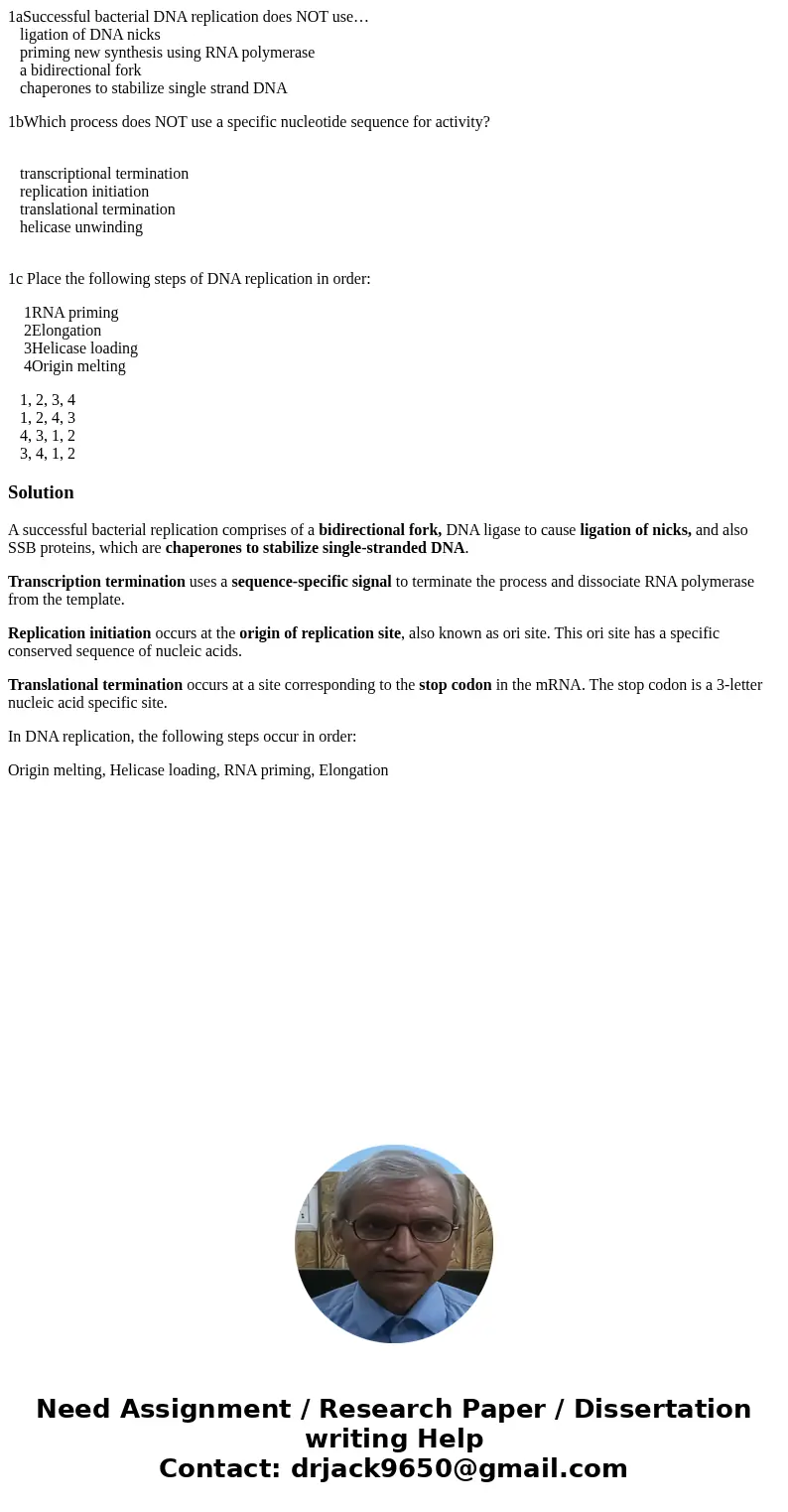1aSuccessful bacterial DNA replication does NOT use ligation
1aSuccessful bacterial DNA replication does NOT use…
ligation of DNA nicks
priming new synthesis using RNA polymerase
a bidirectional fork
chaperones to stabilize single strand DNA
1bWhich process does NOT use a specific nucleotide sequence for activity?
transcriptional termination
replication initiation
translational termination
helicase unwinding
1c Place the following steps of DNA replication in order:
1RNA priming
2Elongation
3Helicase loading
4Origin melting
1, 2, 3, 4
1, 2, 4, 3
4, 3, 1, 2
3, 4, 1, 2
Solution
A successful bacterial replication comprises of a bidirectional fork, DNA ligase to cause ligation of nicks, and also SSB proteins, which are chaperones to stabilize single-stranded DNA.
Transcription termination uses a sequence-specific signal to terminate the process and dissociate RNA polymerase from the template.
Replication initiation occurs at the origin of replication site, also known as ori site. This ori site has a specific conserved sequence of nucleic acids.
Translational termination occurs at a site corresponding to the stop codon in the mRNA. The stop codon is a 3-letter nucleic acid specific site.
In DNA replication, the following steps occur in order:
Origin melting, Helicase loading, RNA priming, Elongation

 Homework Sourse
Homework Sourse